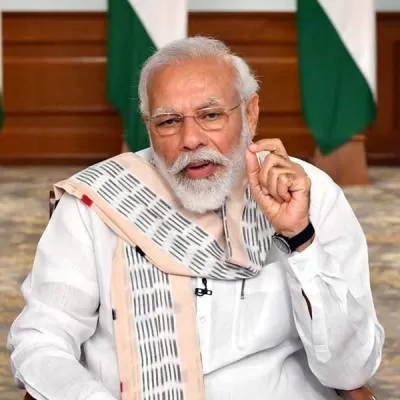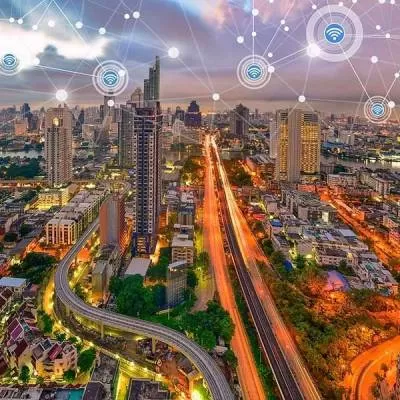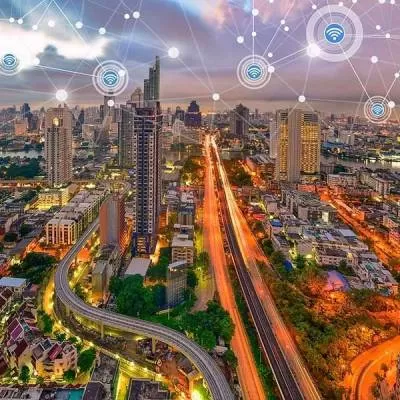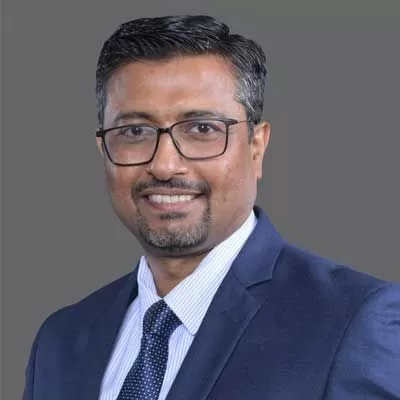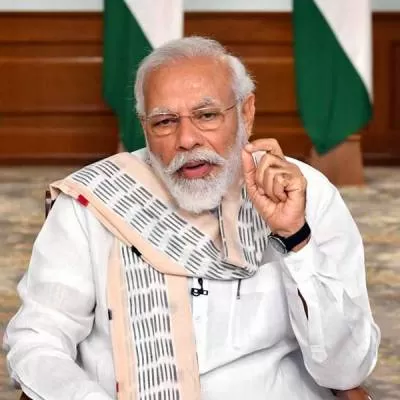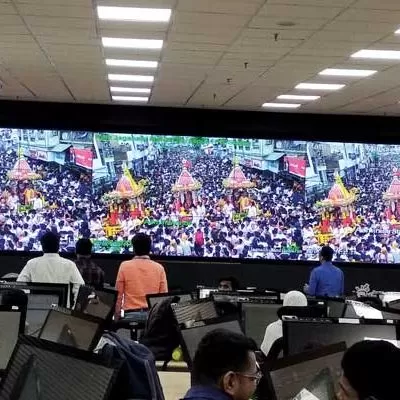- Home
- Infrastructure Urban
- SMART CITIES
- Tall, Smart, Liveable

Tall, Smart, Liveable
The government´s vision of building smart cities spells good news for real estate! The real-estate sector contributes around 6 per cent to India´s GDP. And with the government´s vision of building 100 smart cities, this is expected to increase to 10-12 per cent by 2022.
In 2016, 60 cities were shortlisted to be transformed as smart. What´s more, a white paper released by RICS, Urban Makeover: Evolution or Revolution, mentions that about 89 per cent of the capital investment in the first 20 smart cities has been allocated to the built environment (urban development and housing, buildings, waterfront development, etc), transportation, water, wastewater management and energy. And reports indicate that a smart city will enable concrete solutions towards creating housing for all, owing to efficient utilisation of resources.
Greenfield of opportunities
Greenfield cities that have been under planning and development have spurred opportunities for the real-estate sector as well. In fact, as far as housing infrastructure is concerned, building greenfield cities from scratch offers vast advantages over the redevelopment of existing urban spaces, especially densely populated zones. In the present day, such developments include NAINA in Navi Mumbai; GIFT-City in Gujarat, Naya Raipur and cities identified along the Delhi Mumbai Industrial Corridor (DMIC)- all of which are being developed on the lines of smart cities.
NAINA, for instance, is being planned as an urban agglomeration and will host 22 smart cities, all of which is greenfield development.
At a time when major cities are eyeing vertical growth, V Venugopal, Additional Chief Planner, NAINA, CIDCO, says, ´NAINA will not only have residential projects but will be the next Bandra-Kurla Complex of Navi Mumbai.´
In the meantime, CIDCO has already issued tenders for nearly 14,000 housing units for economically weaker sections (EWS) and low income group (LIG). ´In what will give a fillip to the real-estate sector,´ he adds, ´We have asked the Maharashtra Government to give certain concessions in stamp duty and registration.´ Also, he says that for NAINA to become a reality, the villagers, whose land comes under the project, need to form groups and submit their collective land to CIDCO. ´In a recent meeting, we decided to issue property cards to those landowners who surrender their land to CIDCO, so that the implementation of the scheme becomes faster and the project viable.´
As for DMIC, eight smart cities have been planned in Phase-1. Alkesh Sharma, CEO & Managing Director, Delhi Mumbai Industrial Corridor Development Corporation (DMICDC), updates, ´Four of them - Dholera in Gujarat, AURIC in Maharashtra, Vikram-Udyogpuri in Madhya Pradesh and Integrated Industrial Township Greater Noida (IITGNL) in Uttar Pradesh - are in the implementation stage, with laying of roads and utilities in progress.´ He further adds that Dholera, with a total footprint of over 920 sq km and developable area of 540 sq km, is India´s largest upcoming green city with a target residential population of 2 million and employment for 800,000 people by 2040. In contrast to Dholera, which has large land parcels, the Integrated Industrial Township in Greater Noida is a relatively small project covering about 302.63 hectare, and has earmarked 10 per cent of the project to residential and around 15 per cent to open spaces.´Housing and civic infrastructure are similarly benchmarked to the highest standards in AURIC, Vikram Udyogpuri and other cities in various stages of planning.´
Shortlisted cities, for real
The 60 cities shortlisted by the Government have started actioning their smart plan. In terms of sector-wise preferences, housing tops the chart with an estimated spending of Rs 10,055 crore.
CW PROPERTY TODAY connected with select cities to collate updated data on their spending.
The Pune Municipal Corporation (PMC), for instance, is acting proactively to fix infrastructure for the future. As per latest updates received from PMC, ´The budget allocated under the Pune Smart City Development Corporation (PSCDCL) for the housing sector include affordable housing through private participation, Rs 40 crore for 350 houses in slums of ABB area. Also, a transit hub with an investment over of Rs 500 crore is to be developed through PPP. Meanwhile, for riverfront development, the smart city has envisaged an investment in excess of Rs 100 crore.´
Under the Tirupati Smart City plan, the city corporation has identified three areas for the real-estate sector: Residential, commercial and industrial, consisting of around 77 projects worth Rs 1,600 crore. V Vinay Chand, Commissioner, Tirupati Municipal Corporation, shares, ´Now coming to the real-estate sector, a large part of the aforementioned amount will be dedicated to commercial areas. The retrofit areas we have selected for the smart city projects fall under the Central Business District, which is around 750 acre that start from the Tirupati station and bus stations till the foothills of Tirumala. Considering that 75,000 to 1 lakh pilgrims visit the city every day, the hospitality sector plays a vital role in revenue enhancement. Hence, the 77 projects envisaged by us are mainly towards building some core areas to smart city standards.´
Under the head of ´housing and inclusiveness´ (affordable housing), Surat plans to improve living conditions for the urban poor and slum pockets. As M Nagarajan, Deputy Commissioner, Surat Municipal Corporation, shares, ´We are planning around 1,092 EWS-I and 2,000 EWS-II houses under Pradhan Mantri Jan Awas Yojana. Plans are also being laid for zero slum area by developing 5,800 houses based on the PPP model. The total projected cost is Rs 700 crore, which includes Rs 460 crore under PPP.´
For real estate, it´s raining opportunities in Bhubaneswar as well, especially with the Odisha government´s initiative of developing the city in a comprehensive manner. As R Vineel Krishna, CEO, Bhubaneswar Smart City, says, ´As per the state government policy on affordable housing, more than 10,000 houses amounting to Rs 600 crore are being developed across the city on PPP mode.
Also to be developed on PPP mode is the redevelopment project amounting to more than Rs 2,500 crore. The Satyanagar Institutional Core with a Central Business District of about 40 hectare will also be redeveloped on PPP mode and there will be auction of certain land parcels.´
Further, the government´s mission also aims at integrating various programmes to develop a holistic smart city. In this regard, Visakhapatnam Corporation has integrated housing on a convergence model. M Hari Narayanan, Commissioner, Greater Visakhapatnam Municipal Corporation, explains, ´Funds allocated under the government´s flagship programme, ´Housing for All´, will be utilised under our Smart City plans. Hence, there is no requirement of separate funds. As far as opportunities for the real-estate sector, in 2017-18, we plan to construct about 20,000 housing units and will spend Rs 55 crore in this direction.´
While smart cities will have opportunities for several industries in the areas of smart transportation, water management, safety and security, Internet of Things, and more, this new-age concept will bring direct and latent benefits for the real-estate sector!
Development influencing real estate
As a first step to revitalising the urban centre in a smarter and more sustainable city, Visakhapatnam has already launched a modern centralised City Command Centre. M Hari Narayanan, Commissioner, Greater Visakhapatnam Municipal Corporation (GVMC), shares more:
Under AMRUT, water distribution lines worth Rs 150 crore will be taken up on priority.
A detailed project report (DPR) for constructing underground drainage in the Gajuwaka and Malkapuram areas at Rs 500 crore has been submitted to the Andhra Pradesh Urban Infrastructure Finance Corporation.
Providing 100 per cent underground sewerage network will improve the overall public health scenario, which in turn will influence the real-estate sector.
The urban local body is taking up ´Complete Streets´ on a priority basis. Priority to pedestrians will be taken up in selected areas, and modern walkways will be developed. GVMC is conducting a survey in this regard.
Request for qualification (RFQ) has been issued for modernising three schools that come under the GVMC purview.
We are soon to float proposals for smart schools, 24 x 7 water supply, cycling tracks, public toilets, bus stops, modern walkways, etc, under area-based development plans.
USTDA has completed the first phase of the Smart City Master Plan Framework, with recommendations for skill development and the transport sector.
High on city surveillance
With most projects to be executed in PPP mode as per the state government policy, R Vineel Krishna, CEO, Bhubaneswar Smart City, shares more...
In area-based development, the Bhubaneswar Town Centre District will be a mixed-use development including commercial, educational and residential developments.
Projects such as Satyanagar Institutional Core, Janpath housing redevelopment project, railway station multi-modal hub project, affordable housing projects, etc, in this 1,000 hectare will bring huge opportunities for real estate.
Commercial spaces with smart features are being developed by the Smart City SPV and another SPV for the railway station redevelopment project is also being created.
While all buildings will be supported with the latest building management features and GRIHA rating, the multi-level car parking building and commercial space in the top floors have already been tendered.
The commercial projects will have to integrate their surveillance systems and the parking management systems with the city-level intelligent city operations and management centre. We, along with the Odisha Police Department, have installed a citywide surveillance system - provided by Honeywell - that has identified 28 strategic locations in the city to install 114 integrated closed-circuit televisions and automatic number plate reading cameras, using a Command and Control System that provides a common operating picture in the Police Commissionerate headquarters.
That apart, we have also floated RFPs to implement an intelligent traffic management system (ITMS). While the project-implementing agency will have to complete the project in just nine months, Canada-based IBI Group will be the programme implementing agency for ITMS.
Focused on affordable homes
Surat has undertaken under area-based development projects (ABD 39) under the Pradhan Mantri Awas Yojana (PMAY). M Nagarajan, Deputy Commissioner, Surat Municipal Corporation, shares more...
EWS-I and EWS-II sub schemes are planned for 1,092 and 2,000 dwelling units respectively. Work orders for 1,090 EWS-I and 200 dwelling units under EWS-II have been already issued in February 2017. Tenders for 1,088 dwelling units under EWS-II are already received and under scrutiny while tenders of the remaining 714 dwelling units are under preparation. All projects are expected to be completed with all amenities by December 2019.
We have also planned the redevelopment of 11 slums with 5,800 hutments on PPP under PMAY.
Hotels, malls, IT, commercial and residential shall benefit from the pan-city and ABD initiatives directly and indirectly.
Special projects like fibre-to-home, last mile connectivity in public transit systems, better waste management, improved air quality and road infrastructure that matches world standards, etc, shall enable better land value capture and optimum use of real-estate, and create investment areas.
Buildings under ABD-20 shall have solar panels installed. Also, LED streetlights shall be used for all affordable housing under smart city.
India´s first multi-modal transportation hub is planned at Surat railway station at Rs 5,000 crore under the PPP model.
A city heritage square with a budget outlay of Rs 2 crore is planned for the city to symbolise Surat´s rich cultural legacy.
Around Rs 300 crore is to be spent on an outdoor game stadium with a capacity of 35,000 near West Zone Office, Palanpor; the feasibility study is on and the project will be implemented on PPP mode.
Fixing infrastructure for the future
Pune Municipal Corporation (PMC) is moving quickly in the next five years to fix infrastructure as much as possible and implement ICT solutions along with significant progress in the bus rapid transport (BRT), ring road and metro rail projects. PMC shares more...
To fix the housing (MIG/LIG) challenge, Pune is eyeing an investment opportunity of over Rs 20,000 crore for the real-estate sector to meet the requirements of affordable and mass housing in the next five years.
Leveraging on multiple riverfronts, PMC will endeavour to fully clean the rivers and develop attractive recreational destinations.
We are developing a world-class multi-modal transit hub in Balewadi on a 10-acre parcel.
We are developing a centralised command and control centre to manage and master-control various smart-city systems such as parking, waste management, environment monitoring, etc.
We are developing a ´smart Pune public transport system´ to significantly increase public transportation usage from the current 18 per cent.
To reduce congestion on roads, the city is developing an intelligent Pune traffic system. Through ICT solutions, we will synchronise signals, improve parking and drive real-time traffic analysis.
The city is also moving towards providing 24 x 7 water availability through a host of ICT solutions.
Redevelopment and retrofit opportunities
Tirupati Municipal Corporation (TMC) is planning major retrofit activity for all its bus stations into a multi-model integrated hub - worth Rs 300 crore on PPP basis û under area-based development. V Vinay Chand, Commissioner, TMC, shares additional project opportunities.
We have plans to commission three-star or five-star lodging facilities, an entertainment zone and, most important, a medical facility to cater to emergency needs.
As the city has a substantial vacant land parcel, the corporation has decided to develop four multi-level car parking projects with a total outlay of about Rs 200 crore.
We will implement an integrated Command and Collaboration Centre, and the construction of an art district - a project worth about Rs 150-200 crore.
Modernisation of the vegetable market will provide a good opportunity for the real-estate sector. Through this project, we will tap the potential of 2 acre of prime land.
We plan to develop a sports facility on vacant land in our possession.
The project under the Smart City plan will be largely focused on monetising available land parcel for commercial use.
We plan to construct a slum redevelopment project worth Rs 100 crore. In a span of one year, we will construct a G + 8 structure (two floors dedicated to commercial activities) consisting of 360 dwelling units. We will issue tenders in the next couple of weeks.
We are also undertaking road development projects, road beautification and street furnishing projects.
We are retrofitting major pilgrim routes to improve modern walkways, pedestrian path; and create water ATMs and Wi-Fi zones, etc.
- SHRIYAL SETHUMADHAVAN
(With inputs from RAHUL KAMAT)
To share your views on this article, write in at feedback@ConstructionWorld.in
- GDP
- Smart Cities Mission
- RICS
- Transportation
- Water
- Wastewater management
- DMIC
- NAINA
- CIDCO
- EWS
- LIG
- AURIC
- IITGNL
- DMICDC
- Vikram Udyogpuri
- PMC
- PSCDCL
- ABB
- Tirupati Smart City plan
- V Vinay Chand
- Tirupati Municipal Corporation,Pradhan Mantri Jan Awas Yojana
- R Vineel Krishna,Bhubaneswar Smart City,Satyanagar Institutional Core
- M Hari Narayanan
- Housing for All
- M Hari Narayanan,GV
CW PROPERTY TODAY delves into the opportunities for the real-estate sector in India´s Smart Cities mission. The government´s vision of building smart cities spells good news for real estate! The real-estate sector contributes around 6 per cent to India´s GDP. And with the government´s vision of building 100 smart cities, this is expected to increase to 10-12 per cent by 2022. In 2016, 60 cities were shortlisted to be transformed as smart. What´s more, a white paper released by RICS, Urban Makeover: Evolution or Revolution, mentions that about 89 per cent of the capital investment in the first 20 smart cities has been allocated to the built environment (urban development and housing, buildings, waterfront development, etc), transportation, water, wastewater management and energy. And reports indicate that a smart city will enable concrete solutions towards creating housing for all, owing to efficient utilisation of resources. Greenfield of opportunities Greenfield cities that have been under planning and development have spurred opportunities for the real-estate sector as well. In fact, as far as housing infrastructure is concerned, building greenfield cities from scratch offers vast advantages over the redevelopment of existing urban spaces, especially densely populated zones. In the present day, such developments include NAINA in Navi Mumbai; GIFT-City in Gujarat, Naya Raipur and cities identified along the Delhi Mumbai Industrial Corridor (DMIC)- all of which are being developed on the lines of smart cities. NAINA, for instance, is being planned as an urban agglomeration and will host 22 smart cities, all of which is greenfield development. At a time when major cities are eyeing vertical growth, V Venugopal, Additional Chief Planner, NAINA, CIDCO, says, ´NAINA will not only have residential projects but will be the next Bandra-Kurla Complex of Navi Mumbai.´ In the meantime, CIDCO has already issued tenders for nearly 14,000 housing units for economically weaker sections (EWS) and low income group (LIG). ´In what will give a fillip to the real-estate sector,´ he adds, ´We have asked the Maharashtra Government to give certain concessions in stamp duty and registration.´ Also, he says that for NAINA to become a reality, the villagers, whose land comes under the project, need to form groups and submit their collective land to CIDCO. ´In a recent meeting, we decided to issue property cards to those landowners who surrender their land to CIDCO, so that the implementation of the scheme becomes faster and the project viable.´ As for DMIC, eight smart cities have been planned in Phase-1. Alkesh Sharma, CEO & Managing Director, Delhi Mumbai Industrial Corridor Development Corporation (DMICDC), updates, ´Four of them - Dholera in Gujarat, AURIC in Maharashtra, Vikram-Udyogpuri in Madhya Pradesh and Integrated Industrial Township Greater Noida (IITGNL) in Uttar Pradesh - are in the implementation stage, with laying of roads and utilities in progress.´ He further adds that Dholera, with a total footprint of over 920 sq km and developable area of 540 sq km, is India´s largest upcoming green city with a target residential population of 2 million and employment for 800,000 people by 2040. In contrast to Dholera, which has large land parcels, the Integrated Industrial Township in Greater Noida is a relatively small project covering about 302.63 hectare, and has earmarked 10 per cent of the project to residential and around 15 per cent to open spaces.´Housing and civic infrastructure are similarly benchmarked to the highest standards in AURIC, Vikram Udyogpuri and other cities in various stages of planning.´ Shortlisted cities, for real The 60 cities shortlisted by the Government have started actioning their smart plan. In terms of sector-wise preferences, housing tops the chart with an estimated spending of Rs 10,055 crore. CW PROPERTY TODAY connected with select cities to collate updated data on their spending. The Pune Municipal Corporation (PMC), for instance, is acting proactively to fix infrastructure for the future. As per latest updates received from PMC, ´The budget allocated under the Pune Smart City Development Corporation (PSCDCL) for the housing sector include affordable housing through private participation, Rs 40 crore for 350 houses in slums of ABB area. Also, a transit hub with an investment over of Rs 500 crore is to be developed through PPP. Meanwhile, for riverfront development, the smart city has envisaged an investment in excess of Rs 100 crore.´ Under the Tirupati Smart City plan, the city corporation has identified three areas for the real-estate sector: Residential, commercial and industrial, consisting of around 77 projects worth Rs 1,600 crore. V Vinay Chand, Commissioner, Tirupati Municipal Corporation, shares, ´Now coming to the real-estate sector, a large part of the aforementioned amount will be dedicated to commercial areas. The retrofit areas we have selected for the smart city projects fall under the Central Business District, which is around 750 acre that start from the Tirupati station and bus stations till the foothills of Tirumala. Considering that 75,000 to 1 lakh pilgrims visit the city every day, the hospitality sector plays a vital role in revenue enhancement. Hence, the 77 projects envisaged by us are mainly towards building some core areas to smart city standards.´ Under the head of ´housing and inclusiveness´ (affordable housing), Surat plans to improve living conditions for the urban poor and slum pockets. As M Nagarajan, Deputy Commissioner, Surat Municipal Corporation, shares, ´We are planning around 1,092 EWS-I and 2,000 EWS-II houses under Pradhan Mantri Jan Awas Yojana. Plans are also being laid for zero slum area by developing 5,800 houses based on the PPP model. The total projected cost is Rs 700 crore, which includes Rs 460 crore under PPP.´ For real estate, it´s raining opportunities in Bhubaneswar as well, especially with the Odisha government´s initiative of developing the city in a comprehensive manner. As R Vineel Krishna, CEO, Bhubaneswar Smart City, says, ´As per the state government policy on affordable housing, more than 10,000 houses amounting to Rs 600 crore are being developed across the city on PPP mode. Also to be developed on PPP mode is the redevelopment project amounting to more than Rs 2,500 crore. The Satyanagar Institutional Core with a Central Business District of about 40 hectare will also be redeveloped on PPP mode and there will be auction of certain land parcels.´ Further, the government´s mission also aims at integrating various programmes to develop a holistic smart city. In this regard, Visakhapatnam Corporation has integrated housing on a convergence model. M Hari Narayanan, Commissioner, Greater Visakhapatnam Municipal Corporation, explains, ´Funds allocated under the government´s flagship programme, ´Housing for All´, will be utilised under our Smart City plans. Hence, there is no requirement of separate funds. As far as opportunities for the real-estate sector, in 2017-18, we plan to construct about 20,000 housing units and will spend Rs 55 crore in this direction.´ While smart cities will have opportunities for several industries in the areas of smart transportation, water management, safety and security, Internet of Things, and more, this new-age concept will bring direct and latent benefits for the real-estate sector! Development influencing real estate As a first step to revitalising the urban centre in a smarter and more sustainable city, Visakhapatnam has already launched a modern centralised City Command Centre. M Hari Narayanan, Commissioner, Greater Visakhapatnam Municipal Corporation (GVMC), shares more: Under AMRUT, water distribution lines worth Rs 150 crore will be taken up on priority. A detailed project report (DPR) for constructing underground drainage in the Gajuwaka and Malkapuram areas at Rs 500 crore has been submitted to the Andhra Pradesh Urban Infrastructure Finance Corporation. Providing 100 per cent underground sewerage network will improve the overall public health scenario, which in turn will influence the real-estate sector. The urban local body is taking up ´Complete Streets´ on a priority basis. Priority to pedestrians will be taken up in selected areas, and modern walkways will be developed. GVMC is conducting a survey in this regard. Request for qualification (RFQ) has been issued for modernising three schools that come under the GVMC purview. We are soon to float proposals for smart schools, 24 x 7 water supply, cycling tracks, public toilets, bus stops, modern walkways, etc, under area-based development plans. USTDA has completed the first phase of the Smart City Master Plan Framework, with recommendations for skill development and the transport sector. High on city surveillance With most projects to be executed in PPP mode as per the state government policy, R Vineel Krishna, CEO, Bhubaneswar Smart City, shares more... In area-based development, the Bhubaneswar Town Centre District will be a mixed-use development including commercial, educational and residential developments. Projects such as Satyanagar Institutional Core, Janpath housing redevelopment project, railway station multi-modal hub project, affordable housing projects, etc, in this 1,000 hectare will bring huge opportunities for real estate. Commercial spaces with smart features are being developed by the Smart City SPV and another SPV for the railway station redevelopment project is also being created. While all buildings will be supported with the latest building management features and GRIHA rating, the multi-level car parking building and commercial space in the top floors have already been tendered. The commercial projects will have to integrate their surveillance systems and the parking management systems with the city-level intelligent city operations and management centre. We, along with the Odisha Police Department, have installed a citywide surveillance system - provided by Honeywell - that has identified 28 strategic locations in the city to install 114 integrated closed-circuit televisions and automatic number plate reading cameras, using a Command and Control System that provides a common operating picture in the Police Commissionerate headquarters. That apart, we have also floated RFPs to implement an intelligent traffic management system (ITMS). While the project-implementing agency will have to complete the project in just nine months, Canada-based IBI Group will be the programme implementing agency for ITMS. Focused on affordable homes Surat has undertaken under area-based development projects (ABD 39) under the Pradhan Mantri Awas Yojana (PMAY). M Nagarajan, Deputy Commissioner, Surat Municipal Corporation, shares more... EWS-I and EWS-II sub schemes are planned for 1,092 and 2,000 dwelling units respectively. Work orders for 1,090 EWS-I and 200 dwelling units under EWS-II have been already issued in February 2017. Tenders for 1,088 dwelling units under EWS-II are already received and under scrutiny while tenders of the remaining 714 dwelling units are under preparation. All projects are expected to be completed with all amenities by December 2019. We have also planned the redevelopment of 11 slums with 5,800 hutments on PPP under PMAY. Hotels, malls, IT, commercial and residential shall benefit from the pan-city and ABD initiatives directly and indirectly. Special projects like fibre-to-home, last mile connectivity in public transit systems, better waste management, improved air quality and road infrastructure that matches world standards, etc, shall enable better land value capture and optimum use of real-estate, and create investment areas. Buildings under ABD-20 shall have solar panels installed. Also, LED streetlights shall be used for all affordable housing under smart city. India´s first multi-modal transportation hub is planned at Surat railway station at Rs 5,000 crore under the PPP model. A city heritage square with a budget outlay of Rs 2 crore is planned for the city to symbolise Surat´s rich cultural legacy. Around Rs 300 crore is to be spent on an outdoor game stadium with a capacity of 35,000 near West Zone Office, Palanpor; the feasibility study is on and the project will be implemented on PPP mode. Fixing infrastructure for the future Pune Municipal Corporation (PMC) is moving quickly in the next five years to fix infrastructure as much as possible and implement ICT solutions along with significant progress in the bus rapid transport (BRT), ring road and metro rail projects. PMC shares more... To fix the housing (MIG/LIG) challenge, Pune is eyeing an investment opportunity of over Rs 20,000 crore for the real-estate sector to meet the requirements of affordable and mass housing in the next five years. Leveraging on multiple riverfronts, PMC will endeavour to fully clean the rivers and develop attractive recreational destinations. We are developing a world-class multi-modal transit hub in Balewadi on a 10-acre parcel. We are developing a centralised command and control centre to manage and master-control various smart-city systems such as parking, waste management, environment monitoring, etc. We are developing a ´smart Pune public transport system´ to significantly increase public transportation usage from the current 18 per cent. To reduce congestion on roads, the city is developing an intelligent Pune traffic system. Through ICT solutions, we will synchronise signals, improve parking and drive real-time traffic analysis. The city is also moving towards providing 24 x 7 water availability through a host of ICT solutions. Redevelopment and retrofit opportunities Tirupati Municipal Corporation (TMC) is planning major retrofit activity for all its bus stations into a multi-model integrated hub - worth Rs 300 crore on PPP basis û under area-based development. V Vinay Chand, Commissioner, TMC, shares additional project opportunities. We have plans to commission three-star or five-star lodging facilities, an entertainment zone and, most important, a medical facility to cater to emergency needs. As the city has a substantial vacant land parcel, the corporation has decided to develop four multi-level car parking projects with a total outlay of about Rs 200 crore. We will implement an integrated Command and Collaboration Centre, and the construction of an art district - a project worth about Rs 150-200 crore. Modernisation of the vegetable market will provide a good opportunity for the real-estate sector. Through this project, we will tap the potential of 2 acre of prime land. We plan to develop a sports facility on vacant land in our possession. The project under the Smart City plan will be largely focused on monetising available land parcel for commercial use. We plan to construct a slum redevelopment project worth Rs 100 crore. In a span of one year, we will construct a G + 8 structure (two floors dedicated to commercial activities) consisting of 360 dwelling units. We will issue tenders in the next couple of weeks. We are also undertaking road development projects, road beautification and street furnishing projects. We are retrofitting major pilgrim routes to improve modern walkways, pedestrian path; and create water ATMs and Wi-Fi zones, etc. - SHRIYAL SETHUMADHAVAN (With inputs from RAHUL KAMAT) To share your views on this article, write in at feedback@ConstructionWorld.in




